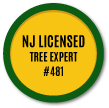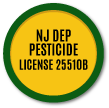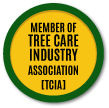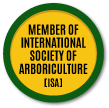 Tree Inspections, Evaluations & Diagnosis in Stewartsville, NJ
Tree Inspections, Evaluations & Diagnosis in Stewartsville, NJ
Tree inspections can be done at any time of year, leaf-on or leaf-off. To be thorough, inspect trees after leaf drop in fall, after leaf-out in spring, and routinely after severe storms.
Inspect trees carefully and systematically. Examine all parts of the tree, including the roots, root or trunk flare, main stem, branches, and branch unions. Be sure to examine all sides of the tree. Use a pair of binoculars to see branches high off the ground. Questions? Contact us at Sunshine Tree & Landscape in Stewartsville, NJ today to learn more about inspections, cabling, air spades, and more.
Consider The Following Factors When Inspecting Trees:
- Tree Condition:
Trees in poor condition may have many dead twigs, dead branches, or small, off-color leaves. Trees in good condition will have full crowns, vigorous branches, and healthy, full-sized leaves; however, green foliage in the crown does not ensure that a tree is safe. Tree trunks and branches can be quite defective and still support a lush green crown. - Tree Species:
Certain tree species are prone to specific types of defects. For example, some species of maple and ash in the Northeast often form weak branch unions, and aspen is prone to breakage at a young age (50-70 years) due to a variety of factors, including decay and cankers.
- Tree Age and Size:
Trees are living organisms subject to constant stress. Pay particular attention to older trees, which may have accumulated multiple defects and extensive decay - What to look for:
Hazardous defects are visible signs that the tree is failing. We recognize seven main types of tree defects: dead wood, cracks, weak branch unions, decay, cankers, root problems, and poor tree architecture. A tree with defects is not hazardous, however, unless some portion of it is within striking distance of a target.





